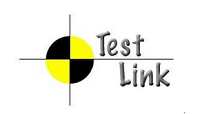Description

LabVIEW

Testia Tarantula
Comprehensive Overview: LabVIEW vs Testia Tarantula
LabVIEW and Testia Tarantula are both specialized tools used in the engineering and testing domains, but they cater to different aspects of the testing process and serve different market needs. Here is a comprehensive overview of each, focusing on their primary functions, target markets, market share, user base, and key differentiating factors:
LabVIEW
a) Primary Functions and Target Markets
Primary Functions: LabVIEW (Laboratory Virtual Instrument Engineering Workbench) is a system-design platform and development environment for a visual programming language from National Instruments. It primarily focuses on:
- Graphical Programming: Utilizing a visual approach to programming that is conducive to engineers who may not be experienced in traditional coding.
- Data Acquisition: Interfacing with real-world signals through hardware integration.
- Instrument Control: Managing and automating laboratory instruments.
- Embedded Systems Development: Designing systems that require real-time operations.
- Measurement and Data Analysis: Offering a vast library of built-in functions for data analysis and visualization.
Target Markets: LabVIEW is widely used across various industries, including:
- Aerospace and Defense
- Automotive
- Electronics
- Biotechnology and Medical Devices
- Academic and Research Institutions
b) Market Share and User Base
LabVIEW has a substantial share of the market in the areas where it excels, particularly in sectors that require sophisticated data acquisition and control systems. Its user base is large and diverse, spanning small academic labs to large-scale industrial enterprises worldwide. National Instruments, the parent company, has established itself as a leader in test and measurement to maintain a strong market presence.
c) Key Differentiating Factors
- Visual Programming Environment: LabVIEW's unique graphical approach makes it accessible to engineers who might not be familiar with text-based coding.
- Broad Hardware Compatibility: Extensive support for a wide range of NI and third-party hardware.
- Comprehensive Suite of Tools: Offers a wide array of functionalities for data acquisition, signal processing, and reporting.
- Strong Community and Ecosystem: Due to its long presence in the industry, it has a robust community and a wealth of resources, including toolkits and libraries.
Testia Tarantula
a) Primary Functions and Target Markets
Primary Functions: Testia Tarantula is a product by Testia, a subsidiary of Airbus that specializes in non-destructive testing (NDT) solutions. It is renowned for:
- NDT Inspection: Particularly in aerospace applications, ensuring the integrity of components using advanced inspection techniques.
- 3D Measurement and Analysis: Providing detailed insights into the geometry and compliance of components.
- Damage Assessment: Helping in the quick detection and assessment of damages or defects.
Target Markets: Testia Tarantula primarily targets the aerospace industry but also finds applications in:
- Automotive
- Railway
- Wind Power Industry
b) Market Share and User Base
While Testia Tarantula is more niche compared to LabVIEW, it has a firm footing in the aerospace sector, leveraging Airbus’s reputation and network. Its user base largely comprises aerospace manufacturers and maintenance providers seeking advanced inspection solutions.
c) Key Differentiating Factors
- Specialization in NDT: Deep focus on non-destructive testing, specifically for high-stakes industries like aerospace.
- Integration with Airbus Ecosystem: Offers solutions that are well-integrated with Airbus’s methodologies and standards.
- Advanced 3D Capabilities: Provides sophisticated tools for precise 3D measurement and analysis, catering specifically to safety and reliability concerns.
Summary
LabVIEW and Testia Tarantula serve different purposes within the engineering and testing context. LabVIEW is a versatile tool for a wide range of engineering applications, particularly favoring data acquisition and control, and is backed by a strong hardware ecosystem. Testia Tarantula, on the other hand, is highly specialized, focusing on the needs of non-destructive testing in industries where component integrity is critical. Each product's market share and user base are reflective of their unique strengths and the specific demands of their target markets.
Contact Info

Year founded :
Not Available
Not Available
Not Available
Not Available
Not Available

Year founded :
Not Available
Not Available
Not Available
Not Available
Not Available
Feature Similarity Breakdown: LabVIEW, Testia Tarantula
LabVIEW and Testia Tarantula are both specialized tools used primarily in engineering and testing environments, though they serve slightly different purposes and industries. Here's a breakdown of their feature similarities and differences:
a) Core Features in Common
-
Automated Testing: Both LabVIEW and Testia Tarantula offer capabilities for automated testing processes, enabling users to create and run tests efficiently.
-
Data Acquisition: Both tools have features for collecting and analyzing data, though LabVIEW is more focused on general-purpose data acquisition systems, while Testia Tarantula specializes in nondestructive testing (NDT) data.
-
Integration: Both systems are designed to integrate with various hardware and software, allowing users to pull in data from different sources and control external devices during testing.
-
Script and Program Development: Both offer platforms for developing customized scripts or programs to conduct specific analyses or tests, with LabVIEW using a graphical programming approach and Testia Tarantula likely supporting scripting for NDT processes.
b) User Interface Comparison
-
LabVIEW: LabVIEW is well-known for its graphical programming environment, which allows users to create programs using a visual block diagram approach. This is particularly user-friendly for those who are not traditional programmers, as it allows for intuitive mapping of signal flow and system logic.
-
Testia Tarantula: While specific interface details of Testia Tarantula are less well-documented, it generally would include interfaces catered to NDT processes, likely featuring visualization tools pertinent to defect analysis and material inspection data. The interface might focus on ease of interpretation and accessibility of testing metrics.
c) Unique Features of Each Product
LabVIEW:
- Graphical Programming Language: LabVIEW's graphical programming is a hallmark feature, enabling complex programming through intuitive visual diagrams.
- Broad Application Scope: It's designed to support a wide range of applications across different engineering fields, from data acquisition to control systems and signal processing.
- Large Library of Instrument Drivers: LabVIEW provides a vast library of instrument drivers which facilitate easy communication with a variety of third-party devices and instruments.
Testia Tarantula:
- Specialization in NDT: Testia Tarantula is specialized for NDT, providing tools specifically aimed at detecting and analyzing defects in materials and components without causing damage.
- Advanced Imaging and Signal Processing for NDT: It likely includes specialized imaging and signal processing capabilities tailored for interpreting data from NDT sensors and devices.
- Industry Focus: It is heavily used in industries where material integrity is critical, such as aerospace and manufacturing, offering industry-specific compliance and reporting features.
In conclusion, while both LabVIEW and Testia Tarantula can be used for automated testing and analysis, they cater to different user needs, with LabVIEW providing a more general-purpose platform and Testia Tarantula offering specialized tools for nondestructive testing.
Features

Not Available

Not Available
Best Fit Use Cases: LabVIEW, Testia Tarantula
LabVIEW and Testia Tarantula are both powerful tools used for different purposes within various industry sectors. Here’s how these two solutions cater to different businesses and scenarios:
LabVIEW
a) For what types of businesses or projects is LabVIEW the best choice?
LabVIEW (Laboratory Virtual Instrument Engineering Workbench) is a system-design platform and development environment typically used for applications that require test, measurement, and control with rapid access to hardware and data insights.
-
Industries: LabVIEW is highly suitable for industries like aerospace, automotive, manufacturing, electronics, telecommunications, and healthcare.
-
Projects: It excels in applications involving data acquisition, instrument control, industrial automation, embedded system design, signal processing, and hardware diagnostics.
-
Businesses: R&D departments, testing labs, and engineering firms that require simulation and analysis tasks would benefit from LabVIEW. It’s particularly useful for organizations that need high-level abstraction for coding complex algorithms and interfacing with hardware.
-
Key Use Case Attributes: Projects that benefit from LabVIEW usually involve prototyping of control systems, real-time data analysis, and integration with hardware components for process automation and metrology.
Testia Tarantula
b) In what scenarios would Testia Tarantula be the preferred option?
Testia Tarantula is a software tool specialized in non-destructive testing (NDT) for the aerospace industry. It focuses on examining materials and components to detect flaws without causing damage.
-
Industries: Primarily aerospace, but also applicable to manufacturing, automotive, and defense where material integrity and safety are vital.
-
Projects: Its main applications include structural health monitoring, defect detection in composite materials, weld inspections, and fatigue analysis in critical components.
-
Businesses: Companies in aerospace manufacturing, maintenance, repair and overhaul (MRO) services, and quality assurance departments will find Testia Tarantula highly beneficial.
-
Key Use Case Attributes: Testia Tarantula is best for scenarios where ensuring product safety and compliance with stringent industry standards is crucial. It is preferred in environments where efficient and accurate testing of material quality is needed.
d) How do these products cater to different industry verticals or company sizes?
-
LabVIEW:
- Industry Verticals: LabVIEW is versatile and thus applicable across various industries requiring process control, automated testing solutions, and high-fidelity simulations.
- Company Sizes: It serves well for both small startups focused on innovation and research, as well as large enterprises needing scalable and integrated test solutions. Small teams appreciate LabVIEW’s ability to expedite development cycles, while large organizations benefit from its broad toolchain for complex systems.
-
Testia Tarantula:
- Industry Verticals: While focused on aerospace, its applications can extend to any sector where non-destructive quality control is embraced, ensuring structural integrity and regulatory compliance.
- Company Sizes: It is most beneficial for medium to large companies that have dedicated quality and safety compliance teams. Large firms with extensive inspection needs will find Tarantula’s capabilities particularly advantageous.
In summary, LabVIEW and Testia Tarantula offer specialized solutions catering to their unique niches addressing both operational and safety requirements in respective industries. Proper selection between these tools will depend on the specific goals, industry requirements, and operational size of the business in question.
Pricing

Pricing Not Available

Pricing Not Available
Metrics History
Metrics History
Comparing undefined across companies
Conclusion & Final Verdict: LabVIEW vs Testia Tarantula
Determining the best product between LabVIEW and Testia Tarantula requires an examination of the context, goals, and needs of potential users. Both tools are renowned within their niches, but they serve distinct purposes and user bases.
a) Best Overall Value
LabVIEW is a comprehensive development environment specifically designed for creating complex control systems and data acquisition applications. On the other hand, Testia Tarantula specializes in non-destructive testing (NDT) for composite materials and is focused on the aerospace industry.
-
LabVIEW: Best suited for users who need a flexible, general-purpose programming environment capable of integrating various hardware for control, automation, and measurement tasks. It offers value through versatility and an extensive community with vast libraries and support.
-
Testia Tarantula: Provides exceptional value for organizations and industries that prioritize aerospace standards and require precise, efficient non-destructive testing tools. It is specially tailored for users working with aircraft maintenance and inspection firms needing specific NDT capabilities.
Best Overall Value Verdict: The choice heavily depends on the intended application domain. LabVIEW offers the best value for users seeking an adaptable development tool for a broad spectrum of engineering and research applications. Testia Tarantula is more valuable for specialized NDT applications, particularly within aerospace.
b) Pros and Cons
LabVIEW:
-
Pros:
- Highly versatile for a wide range of applications.
- Intuitive graphical programming interface.
- Extensive library of pre-built functions and toolkits.
- Strong integration with NI hardware and third-party devices.
- Large user community and substantial documentation.
-
Cons:
- Can be overkill for simple tasks.
- Requires a steep learning curve for advanced functionality.
- Cost can be prohibitive for individuals and small organizations.
- Limited to Windows and some Linux distributions.
Testia Tarantula:
- Pros:
- Tailored for aerospace NDT needs.
- Provides thorough inspection capabilities for composite materials.
- High precision and accuracy in defect detection.
- Strong support for compliance with industry standards.
- Cons:
- Narrow applicability outside of aerospace and NDT applications.
- Limited flexibility compared to more general-purpose development tools.
- Potentially high costs for specialized equipment and software.
c) Recommendations for Choosing Between LabVIEW and Testia Tarantula
-
Define Your Needs: Clearly outline the primary goals you aim to achieve. For broad engineering, automation, or research tasks, consider LabVIEW. For NDT, especially in aerospace, Testia Tarantula would be more appropriate.
-
Assess Expertise and Resources: Evaluate the expertise available within your team. If there is strength in programming and you require versatile project support, LabVIEW may be more suitable. If your team is focused on NDT, especially in aerospace, with available NDT expertise, Testia Tarantula will align better with your needs.
-
Budget and ROI Consideration: Consider both the initial cost and potential return on investment. LabVIEW has a broader application range, possibly leading to greater ROI in diverse projects, while Testia Tarantula’s ROI will be more focused on specialized NDT returns.
-
Future Scalability: If scalability and future technological integration are pivotal, LabVIEW’s extensive libraries and hardware support could be more beneficial across various projects. Testia Tarantula’s scalability relates to its proficiency and compliance within NDT tasks.
Ultimately, the decision should be guided by the specific industry demands, project requirements, and resource availability. Each tool is exceptional within its domain, and understanding your priorities will lead to the best decision.
Add to compare
Add similar companies



